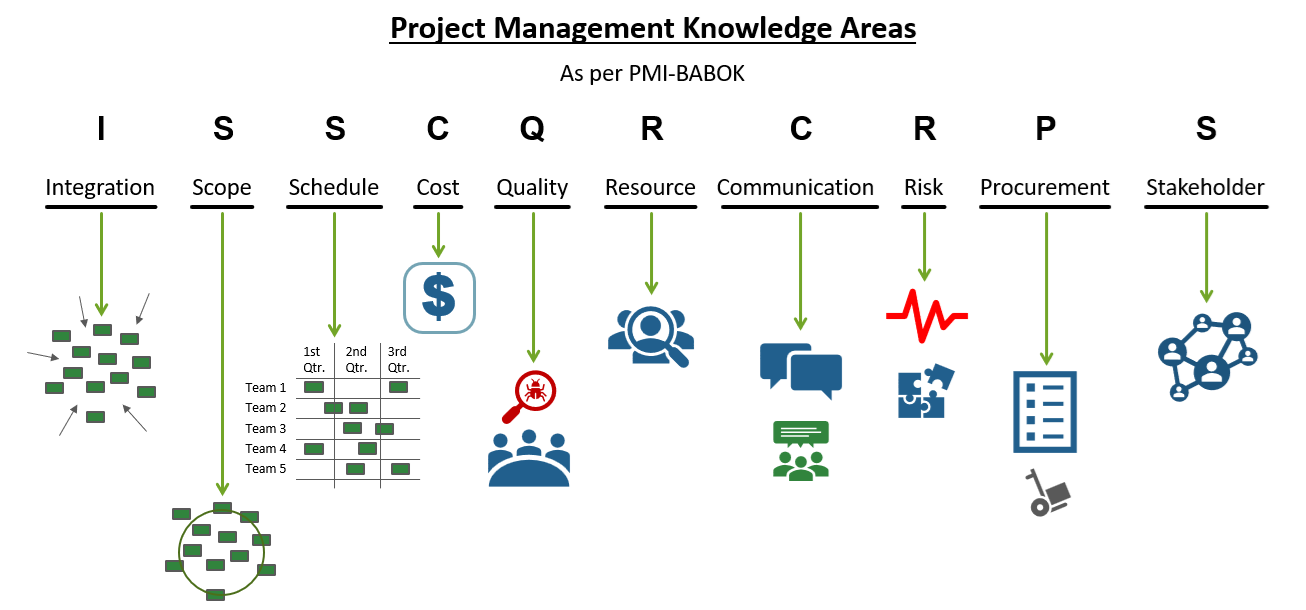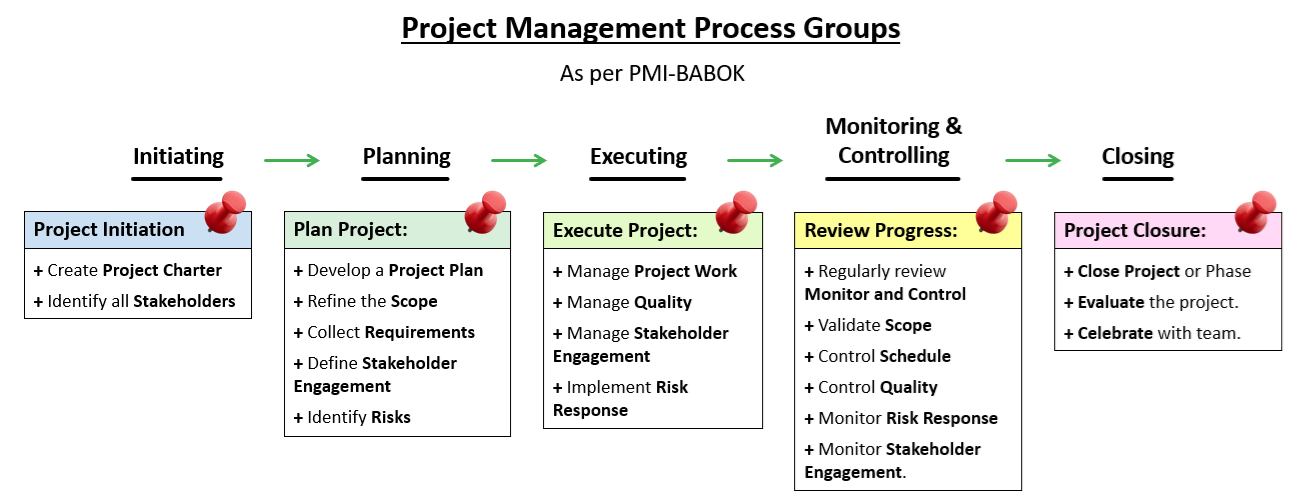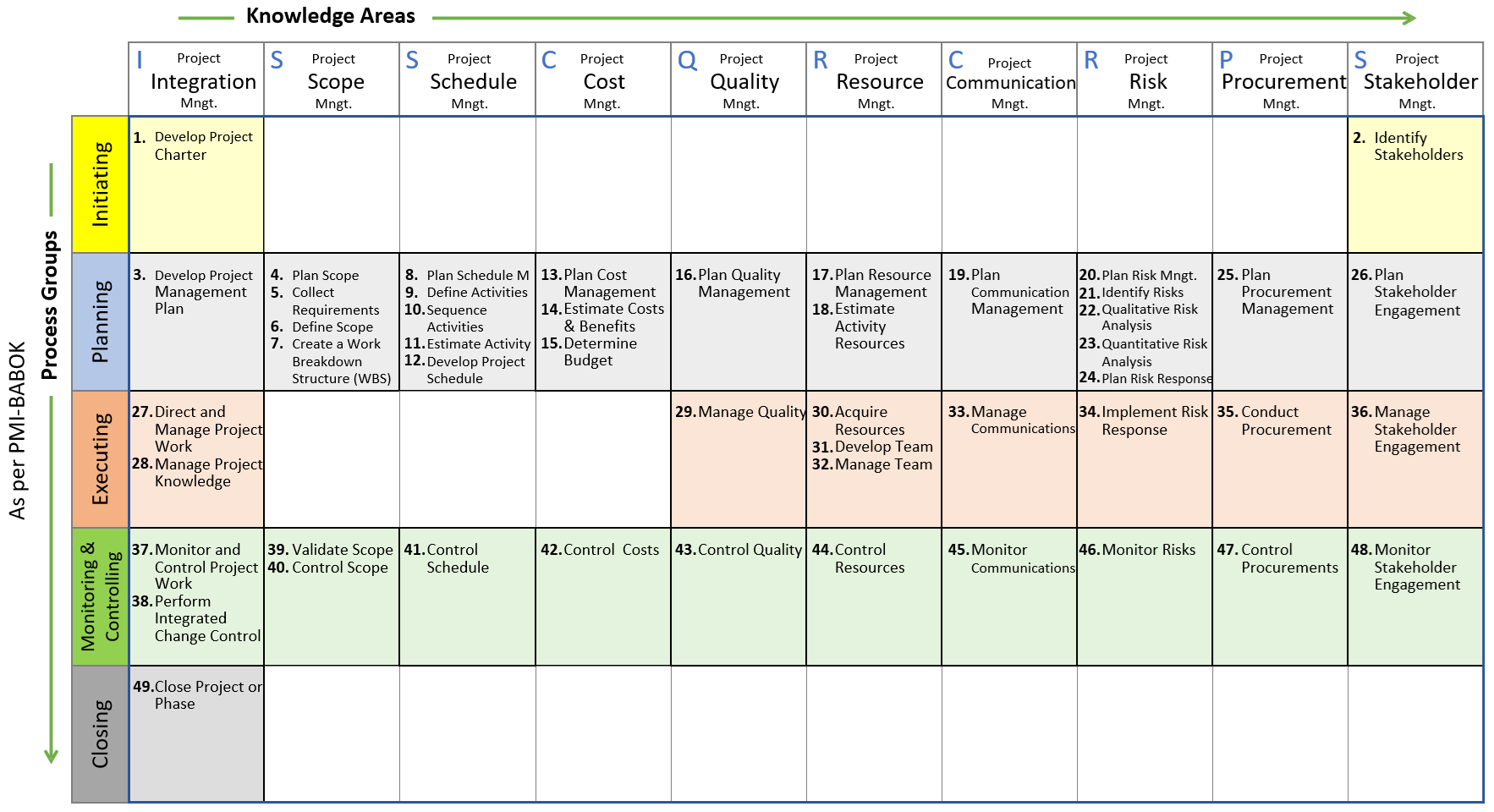As a Business Analyst (BA), it is crucial to understand the complete range of Business Analysis activities that may be implemented in an organisation. These activities include key techniques and best practices necessary for successfully delivering projects and driving organisational success. By mastering and applying these activities within your organisation, you can effectively contribute to achieving business goals and enhancing overall performance. Is there any standard documentation that covers the complete list of Business Analysis activities that are applied in any organisation?
The International Institute of Business Analysis (IIBA) publishes the Business Analysis Body of Knowledge (BABOK) Guide, which serves as a comprehensive resource for Business Analysts (BAs). The BABOK Guide offers a structured framework and a common language to help BAs identify and implement effective solutions.
One of the critical tools within the BABOK Guide is the Knowledge Areas vs. Process Groups matrix. This matrix provides a detailed overview of exclusive Business Analysis activities that can be applied in any organisation. These Business Analysis activities are defined under the Knowledge Areas and their associated Process Groups, making it invaluable for BAs in planning and conducting diverse business analysis initiatives within an organisation.
The BABOK Guide defines 10 key areas of expertise, called Knowledge Areas that include specific business analysis tasks. These Knowledge Areas are: Integration, Scope, Schedule, Cost, Quality, Resource, Communication, Risk, Procurement, and Stakeholder.

The guide also describes 5 main sets of activities in a project, called Process Groups that are designed to accomplish a specific business objective. These Process Groups are: Initiating, Planning, Executing, Monitoring & Controlling, and Closing.

The BABOK Guide devises a unique mechanism where the Knowledge Areas are mapped against the Process Groups to create a matrix, where 49 unique activities are defined as shown in the image below. This mapping helps BAs understand the interrelationships and dependencies between different activities, providing a holistic view of the project lifecycle.

During the project Initiating phase, BAs can use the matrix to identify essential tasks like creating a project charter and stakeholder identification. This phase sets the foundation for the project, ensuring that all stakeholders are identified and project needs are understood and ensuring that all necessary information is captured to define the project’s scope accurately.
In the project Planning phase, BAs focus on creating a detailed business analysis plan, defining project scope, planning schedule, cost, quality, and resources, including communication and risk management strategies. The matrix helps BAs outline the steps required to achieve project objectives, allocate resources efficiently, and establish a clear timeline. This phase is critical for setting the direction and ensuring that all team members are aligned with the project’s goals.
During the project Executing phase, the matrix guides BAs in prioritising requirements elicitation, collaboration with stakeholders, and iterative design and solution development. BAs work closely with stakeholders to gather detailed requirements, ensuring that the solution aligns with business objectives. This phase involves actual project execution along with continuous interaction and collaboration with all stakeholders, enabling BAs to adapt to changing requirements and provide solutions that meet organisational objectives.
In the Monitoring and Controlling phase, BAs actively review the status of the project as it proceeds, evaluating potential obstacles and implementing necessary changes. The matrix helps BAs track progress, measure performance, control any deviations from initial plans, and make necessary adjustments based on feedback and performance metrics. This phase is essential for maintaining project alignment with business goals and ensuring that any deflections are addressed promptly.
Finally, in the Closing phase, the matrix guides BAs in evaluating the implemented solution to ensure it meets business objectives. BAs conduct a thorough evaluation, identifying lessons learnt and areas for improvement. This phase ensures that the project is completed successfully and that valuable insights are documented for future initiatives.
Using the Knowledge Areas vs Process Groups matrix allows BAs to systematically approach business analysis activities, ensuring a holistic view of the project’s lifecycle. It helps in identifying critical touchpoints, fostering better communication and collaboration, and enhancing the efficiency and effectiveness of business analysis initiatives. By integrating this structured approach, BAs can drive continuous improvement, reduce costs, and achieve strategic business goals. The matrix serves as a roadmap, guiding BAs through each phase of the project lifecycle and ensuring that they deliver value to their organisations and clients.
In conclusion, the BABOK Guide’s Knowledge Areas vs. Process Groups matrix is an invaluable tool for Business Analysts. It provides a structured framework that helps BAs plan and conduct diverse business analysis initiatives effectively. By leveraging this matrix, BAs can ensure that their efforts are aligned with business objectives and that they deliver high-quality solutions that meet stakeholder needs.

